Building of the Day: 372 Fulton Street
Gage & Tollner became known for quality, service and good food, especially chops and oysters, late 19th century favorites, and it didn’t take long for it to become the power restaurant of its day.

Gage & Tollner in 2016. Photo by Susan De Vries
Editor’s note: This story has been updated. Read about the landmarked interior here.
Brooklyn, one building at a time.
Name: Former Gage & Tollner Restaurant
Address: 372 Fulton Street
Cross Streets: Smith Street and Red Hook Lane
Neighborhood: Downtown Brooklyn
Year Built: 1875
Architectural Style: Italianate, storefront is Neo-Grec
Architect: Unknown
Landmarked: Yes, doubly. Building individual landmark (1974), dining room landmarked (1975)
The story: As Brooklyn spread out away from the Heights and the harbors, the area we now call Downtown Brooklyn began to be developed. At first, it was residential, with the oldest houses surrounding the old Duffield farm, now centered at Duffield Street. Many homes and churches were established in the area taken up now by MetroTech. By the 1870s, brownstone houses began to be built on Fulton Street, taking advantage of the proximity to City Hall, as well as the business life on Court and Montague Street.
At the same time, the Brooklyn Bridge was in the planning stages, so that by the time 372 Fulton Street was built, as a private home, businesses and homes were already being displaced by the access roads and workspace for the bridge. These businesses began relocating on Fulton St. In the space of only a few years, this house found itself surrounded by theaters, stores, and other retail businesses. Soon, entire blocks were taken up by huge department stores, the elevated train connecting the bridge to the rest of Brooklyn ran down the middle of the street, and this area’s days as a residential neighborhood were over.
Charles Gage opened his first restaurant in 1879, up the block at 302 Fulton Street. The very next year, Eugene Tollner joined him in business. In 1892, they bought this house and transformed it into Brooklyn’s premiere restaurant, Gage & Tollner. It was probably they who put in the very attractive storefront, with its large windows and door. The upper floors remained for many years pretty much as they were when the building was a house. They transformed the ground floor into the “Gaslight era” wonder that helped make them famous.
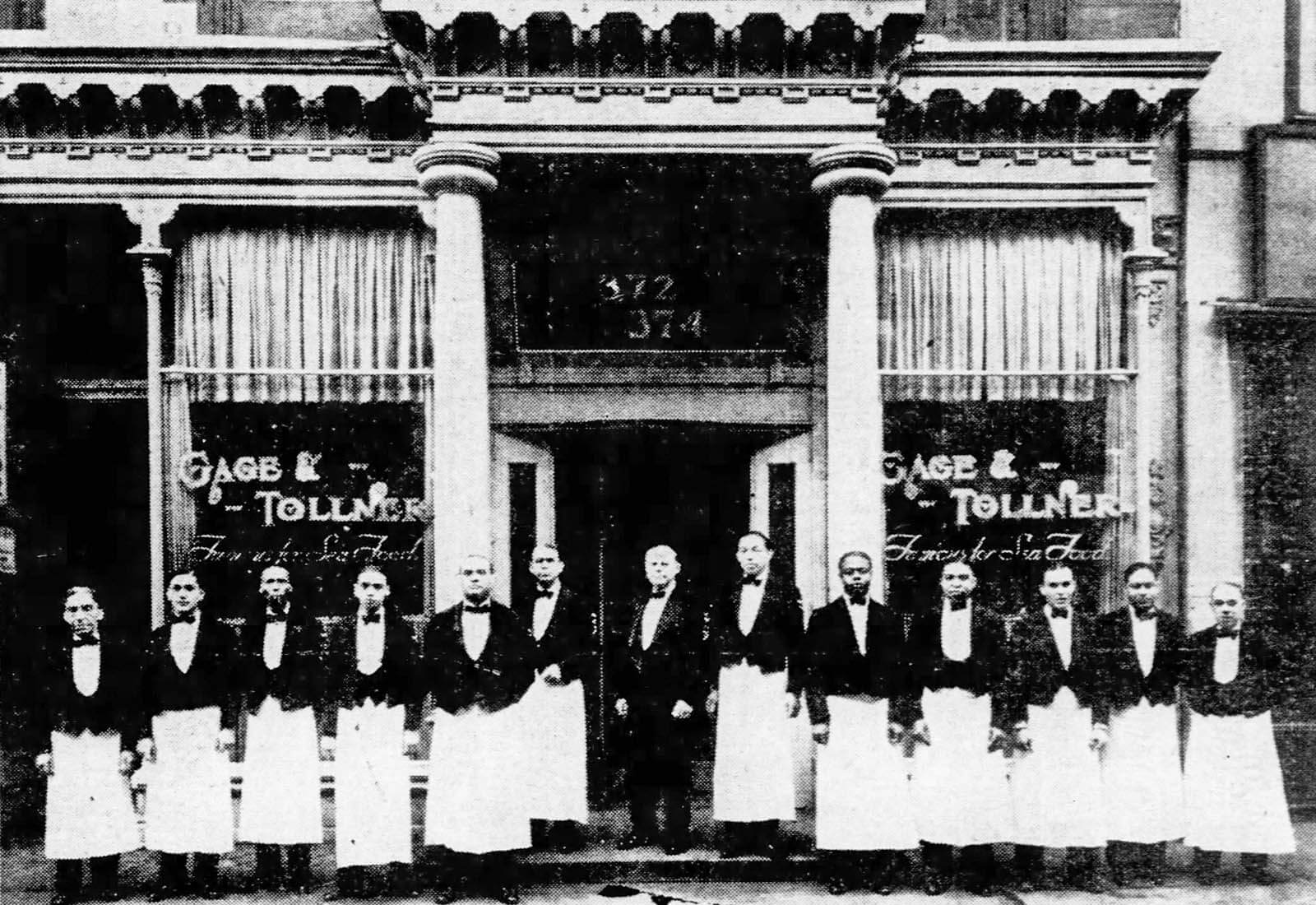
The restaurant soon became known for quality, service and good food, especially chops and oysters, late 19th century favorites, and it didn’t take long for it to become the power restaurant of its day. All of Brooklyn’s elite came here, including politicians, wealthy businessmen and celebrities, and the restaurant was a favorite of Henry Ward Beecher, Frederick Schroeder, the last mayor of the City of Brooklyn, and Diamond Jim Brady. G&T was also a Manhattan favorite, perhaps Brooklyn’s first foodie destination spot.
Of course, it’s the restaurant’s interior that we all remember. The heavy sunburst patterned Lincrusta-Walton wall covering everywhere, the mirrored walls which made the space look much bigger than it actually was, velvet draperies and wall coverings, and the woodwork that tied it all together, all dark and woody, like an expensive men’s club. The crowning glory of the restaurant was always the gleaming brass gas and electric lights. These fixtures were installed in 1888; widely spaced fixtures with long arms. They were arranged to run down the center of the space, illuminating the restaurant with gas-lit upright cut glass bowls. In addition, the fixtures also had incandescent electric light bulbs coming from tendriled arms that pointed down. Originally, these light bulbs were bare, but later had flower shaped glass bowls.
The restaurant was also famous for closing in the summer, a tradition they maintained for many years. In 1911, Mr. Gage and Mr. Tollner retired, selling the restaurant to A.H. Cunningham and Alexander Ingalls, with the provision that they not change anything. In 1919, they in turn, sold the restaurant to Seth Bradford Dewey, a man whose family had extensive restaurant experience. The stipulation that the restaurant continue to be called Gage & Tollner was continued, as well as the provision to not change the interior. The Dewey’s bought the entire bu1lding in 1923, and continued to own the restaurant and building until 1985.
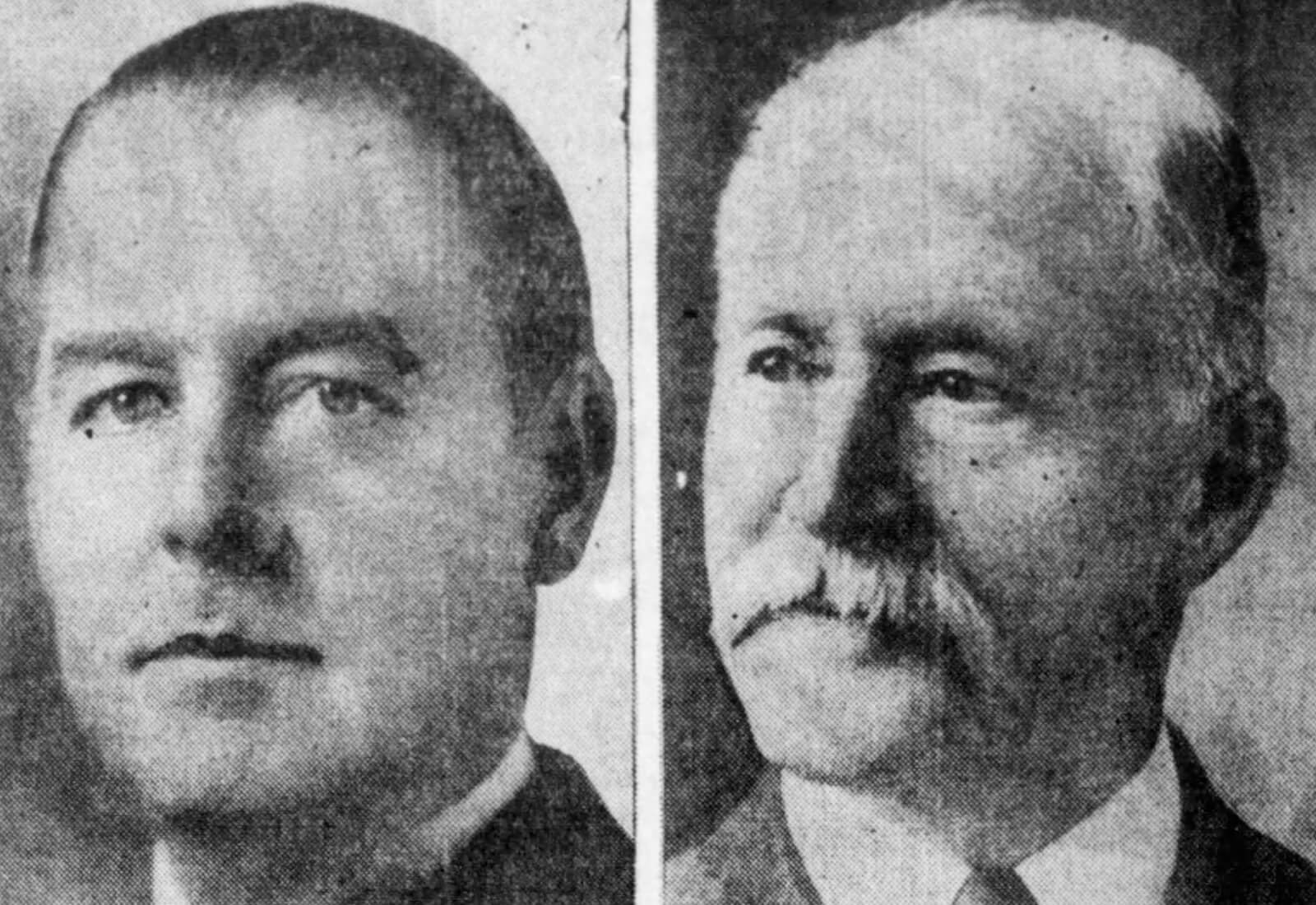
The end of Gage & Tollner began in 1976, when Fulton Street became a pedestrian mall. The area had become downtrodden and scary to patrons who could no longer be dropped at the door, and they stopped coming. In 1985, Ed Dewey, the grandson of Seth Dewey, sold the restaurant to Peter Aschkenasy, the Manhattan restaurateur who had owned Lüchow’s, another famous century old restaurant. He brought in famed African American chef Edna Lewis to bring customers back, but even though G & T gained excellent reviews, with customers coming from as far away as Europe, there still wasn’t enough local business to keep it open. He filed for bankruptcy, and in 1995, Italian restaurateur Joe Chirico bought Gage & Tollner, for $653,000, from the bank. He tried valet parking, but he too, failed.
The building then passed to a new owner, Joe Jemal, who contracted with TGI Friday’s. One would have thought they would make it, but they did not. Gone in 2007. Next was Arby’s. After long negotiations with Landmarks, they opened in 1910 and closed eight months later. Now the storefront is leased to a cheap costume jewelry place that has covered up the walls with bright pink panels. They got in trouble with landmarks for making alterations first, then telling the LPC about it, asking for a retroactive permit. The LPC was not happy, and issued a series of violations. Gage & Tollner’s interior is but one of a handful of landmarked interiors in the entire city.
The fate of Gage & Tollner is up in the air. Peter Aschkenasy and Joe Chirico still own the name, but not the building. Rumor has it that many of the original gaslights have been stolen. Everyone who cares about this space also hopes that the original cherry woodwork, the Lincrusta and the mirrors are still underneath the pink walls, waiting until Brooklyn is once again ready for Gage &Tollner, or perhaps better yet, someplace new, yet as old as the restaurant Diamond Jim Brady once called home. GMAP
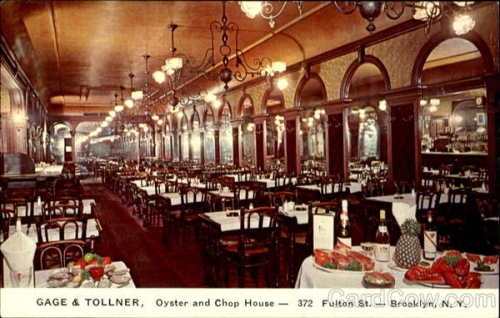
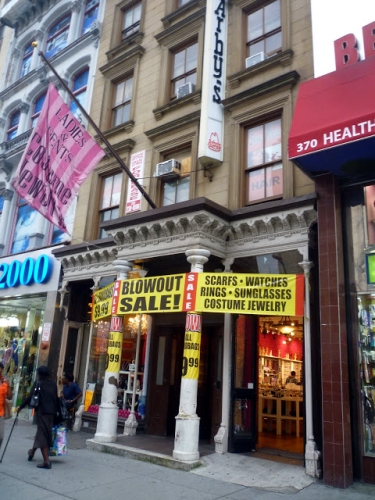
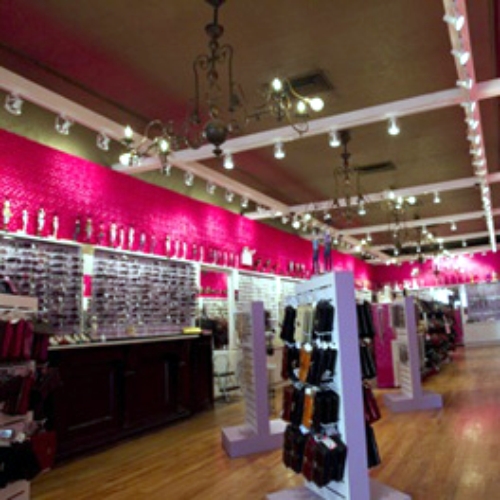
Related Stories
- Landmarks Says No to Gage and Tollner Changes
- The New Gage & Tollner Tenant? A Cheap Jewelry Store
- Gage & Tollner Space Getting New Lease on Life
Email tips@brownstoner.com with further comments, questions or tips. Follow Brownstoner on Twitter and Instagram, and like us on Facebook.





What's Your Take? Leave a Comment